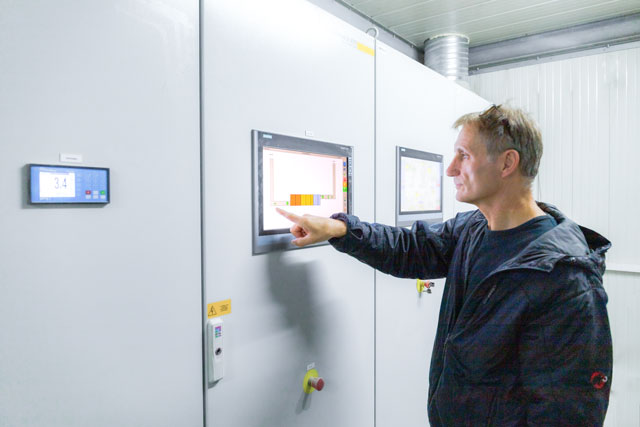Fine grinding of waste glass
Deutsch
SPANGLER – the Plus of Recycling.
The long-standing customer Schirmbeck GmbH had commissioned SPANGLER Automation to carry out the automation of the new glass grinding plant. The control of the mills, conveyor systems and silos, which are from different manufacturers, were coupled with a master control by Spangler and provided with a uniform visualisation. An aeration in the Spangler control cabinets, especially designed for this, prevents deposit of the fine glass particles on the electronic components.
Saving resources with recycling
Glass is made of the raw materials ash, soda, limestone and sand and can be infinitely often recycled. Besides the saving of raw material, another advantage of recycling is the significant reduction of the energy expenditure. The reason for this is that for the melting and new forming of recycling glass significantly less energy is needed than for the new production of glass. Spangler’s customer specialises, among other things, in glass recycling and since 2022 also in grinding to finest glass powder. Here, waste glass is cleaned, sieved, weighed and ground in various steps over a long conveyor line until it is finest milled in the double hammer mill or processed to powder. As the last step the powder is collected in huge silos, where it is stored until transportation.
Exchange of data and energy recovery
Spangler was responsible for the engineering and drafted the overall planning of the automation according to customer’s requirements. For this, a Siemens CPU 1513F-1PN, which was programmed with the processes of the silos and the conveyor system, at the same time was applied for the controls of the mills and filters. The three control units of the various plant manufacturers received a uniform design via Spangler HMI visualisation. A PN/PN (ProfiNet) coupler of Siemens for network separation guarantees a controlled movement of data between the different sections of glass grinding.
Process data and messages of all plants are displayed on the Spangler control unit and reflected on the PC in the central office. Because of the distance of the plant to the office, a fiber optic cable was used.
Due to the very fine grinding of the glass and the dust produced that may also be deposited in the control panels, a strong ventilation system which is not quite commonplace was applied. Fresh air is directed via a pipe system through a fine filter and ‚blown‘ into the control cabinets. The overpressure created prevents glass particles to be deposited in the housing. The air heated due to the power loss of the control cabinets is re-utilized for heating the weighing rooms. Optimal utilization and recovery of heat and energy.
Schirmbeck and Spangler are already planning further orders, like for example modernisation of the glass sorting. “ We have been co-operating with Schirmbeck since 2010 and are glad that we can support them in such an important sector as recycling “ says Spangler’s sales manager Hubert Rackl. „Preserving raw materials and living space with sophisticated automation is a matter of concern to us.“.



 Fine grinding of waste glass
Fine grinding of waste glass